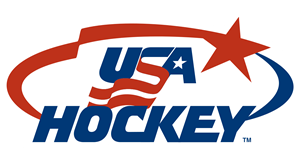How to dress my hockey player
What equipment does my child need?
- Shorts (containing a protective cup or pelvic protector)
- Shin guards
- Socks
- Pants
- Skates
- Shoulder pads
- Elbow pads
- Neck guard
- Jersey
- Helmet
- Mouth guard
- Gloves
- Stick

GEARING UP MY PLAYER
- Players will start with a base layer. This is typically a long sleeved moisture wicking shirt and tall socks. The base layer should fight tight and feel comfortable. This layer improves the fit of the pads and helps control body temperature.
- Your child should then put on their jock or jill. These can be compression pants or shorts or loose mesh shorts. Many of these will come with velcro to secure socks.
- The next piece of equipment to put on is the shin guards. Simply place the shin guard over the shin and knee. Your child's knee should fit as close to the center of the knee cup as possible. Then fasten the velcro straps.
- Pull the hockey socks on over the shin guards with the tight end at the bottom of the shin guard, and pull the socks all the way up. Open the velcro tabs on the mesh shorts and attach the sock to the velcro tab on the back and front. If there are not velcro tabs you can use clear tape to secure the socks. Stick the clear tape to the front of your leg, just below the kneecaps of the shin guard and pull the whole roll around the backside of your leg. Unravel enough tape so that you can overlap the tape on what you have already done. Make sure that you wrap the tape tight enough for it to be secure but not so tight that it is uncomfortable on the back of your leg. Next make another pass around the lower part of your shin above the back of your skate. Repeat this on both legs.
- Pull on the hockey pants. Hockey pants should reach the top of the player's knee and extend up to cover the kidneys and lower ribs. Have your player step into the hockey pants and pull them all the way up. Use the lacing and belt to secure them at the waist. If necessary you can get suspenders to secure the pants.
- Next is the skates. Have your child sit down and slide his or her foot all the way into the skate. Make sure they kick their heels back slightly, settling their feet into the back of the skate boots. Tight laces are key to a young player's skating ability. Be sure to double-knot the laces so they don't come loose during the game. A popular misconception is that tying the skate lace around the ankle will give added support. Lacing around the ankle inhibits good movement and may cause the skate’s boots to break down prematurely. If the laces are too long you can buy shorter laces to accommodate your child's size.
- Slide the shoulder pads over the head, securing both chest straps firmly. Then secure both bicep straps.
- Elbow pads are the last piece of gear to put on before the jersey. First, slide the arms into the pads. The elbow should rest comfortably in the elbow cap. Secure the pads down with the velcro straps. This should allow the padding to extend from your child's lower bicep to the top of the glove.
- Now you put on the jersey. To avoid snagging on the shoulder pads, start by putting one arm through the jersey, then the other, and then pull the jersey over your head.
- Next is the neck guard. When wearing a hockey neck guard, you should ensure it's close to your neck and covers at least three quarters of it, but isn't too loose. It should fit snugly and comfortably, similar to a turtleneck.
- For the helmet, slide the helmet onto your child's head. Once the helmet is in place, secure the side straps from the facemask to the helmet, followed by the chin strap. Once the straps are fastened, the chin cup should fit snugly against the chin. Many helmets are adjustable to ensure a comfortable fit.
- Lastly your child should put on their gloves. Make sure the top of the cuff meets the bottom of your elbow pad, and your fingertips are ¼–½ in from the end of the glove. You should also curl your hand into a fist to make sure the material connecting your palm to the glove doesn't stretch out at the tips. The breaks in the fingers should line up with your knuckles, and the wrist break should line up with your wrist.
- Grab your stick, put in your mouth guard, and hit the ice!



